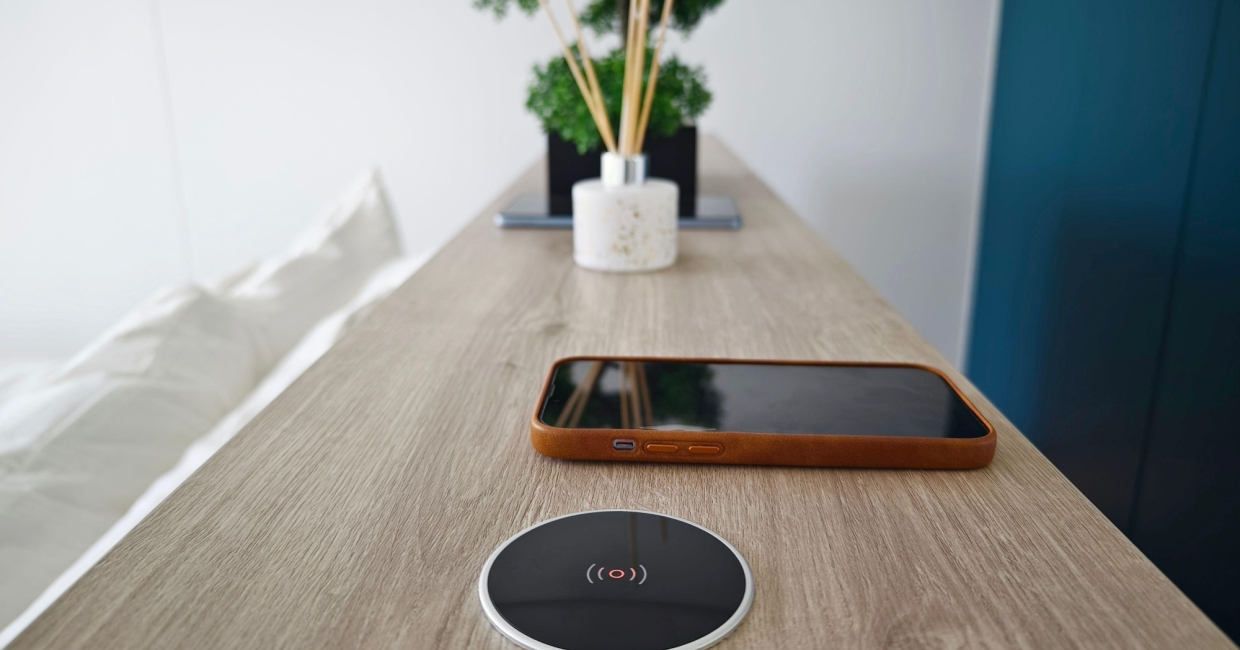The Furniture Industry Research Association (FIRA) provides unrivalled knowledge and guidance to its members, supporting the entire furniture supply chain across all sectors. Here, FIRA brings you up to speed on all the latest developments within the furniture design sphere and its regulatory landscape.
The furniture industry has undergone a remarkable transformation in the past year, driven by the convergence of technology, sustainability, and evolving consumer expectations.
Among the most exciting developments is the growing integration of electrical and smart technologies into furniture design — a trend that is reshaping both residential and commercial spaces.
Sectors such as hospitality and healthcare are at the forefront of adopting electrification into furniture. Hotels are increasingly offering nightstands with USB ports, smart mirrors, and automated climate control furniture, enhancing guest comfort and convenience.
The NHS Supply Chain launched a new framework in May 2025 covering medical healthcare furniture. It includes 13 product categories and 52 approved suppliers, many of which offer smart or adjustable solutions for hospital and care environments.
The Furniture Industry Research Association (FIRA) and their service provider, FIRA International, play a vital role in supporting companies through all stages of product development – from concept to market.
As the integration of electrical components into furniture becomes more widespread – and electrically-operated furniture becomes increasingly common in both domestic and contract settings – the regulatory landscape is evolving to ensure safety, performance, and compliance. Here are the key updates:
Development of draft BS EN 17684:202
This covers stability, strength, durability, and mechanical safety for electrically-operated furniture such as recliners, adjustable beds, and height-adjustable desks.
Development of draft EN 60335-2-116:202x
A new Part 2 standard under the IEC 60335 series, focusing on electrical safety for furniture with motorised parts. It works in conjunction with BS EN 60335-1 and addresses hazards specific to powered furniture.
These standards are expected to be published simultaneously by BSI and CEN and will provide a “presumption of conformity” under the UK’s Supply of Machinery (Safety) Regulations 2008.
FIRA is actively involved in shaping and supporting these standards. Here’s how they help:
Standards Development: Senior Ergonomist and Standards and Regulatory Expert, Levent Caglar, has led the development of BS EN 17684 through CEN TC 207
Guidance Documents: FIRA will publish guides to help members understand and comply with the new regulations
Product Risk Assessment Templates: These will help companies meet the requirements of the Machinery Directive
Smart furniture goes mainstream
In 2025, smart furniture moved beyond novelty and into the realm of everyday functionality. From desks with built-in wireless charging to beds that monitor sleep patterns, the integration of electrics into furniture is becoming a standard feature rather than a luxury.
Sustainability meets technology
Sustainability remains a top priority, and manufacturers are finding ways to combine eco-friendly materials with electrical functionality. For example, companies are using recycled metals and bamboo to build furniture that houses smart components, ensuring that innovation doesn’t come at the cost of the environment.
3D visualisation and AI-driven design
Behind the scenes, electrics in furniture are also benefiting from AI and 3D visualisation tools. These technologies are helping designers prototype and test smart features virtually, reducing waste and speeding up development cycles.
E-commerce and consumer demand
The shift to online shopping has accelerated the demand for smart furniture. Consumers are not only browsing but buying furniture online at record rates.
This digital-first mindset is pushing brands to showcase the benefits of electrical furniture through immersive online experiences, including augmented reality previews and interactive product demos.
Looking ahead
As we move further into 2025, the electrification of furniture is expected to deepen, with innovations like:
- Wireless power transfer for seamless charging
- AI-powered personalisation of furniture settings
- Modular smart systems that adapt to changing needs in compact urban spaces.
The fusion of electrics and furniture is no longer a futuristic concept — it’s a present-day reality that’s redefining how we live, work, and relax.
As electrification becomes a key aspect of modern furniture, it is vital to stay ahead of standards and innovations. With expert guidance from FIRA, companies can confidently navigate this changing landscape, ensuring their innovations are safe, compliant, and market-ready.








